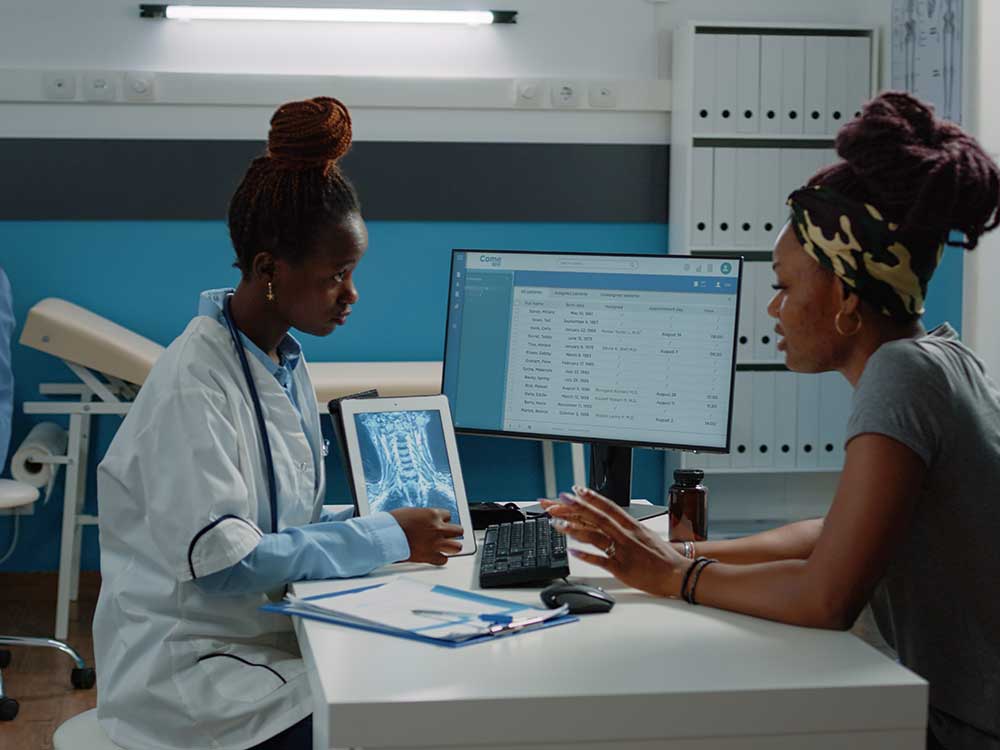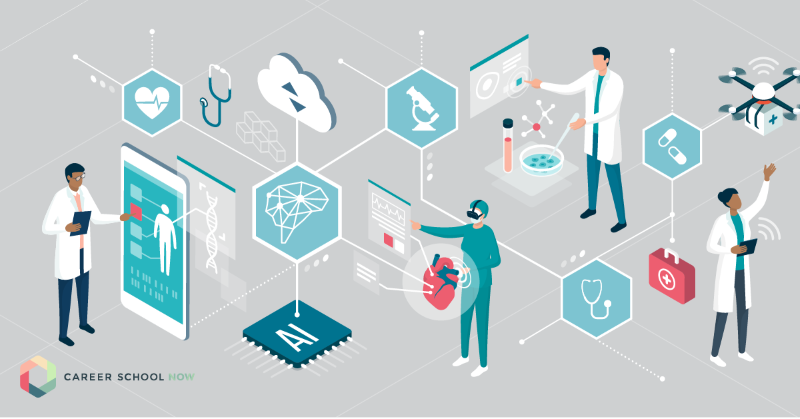Finest Practices in Medical Administration for Improving Efficiency and Reducing Prices
In the ever-evolving landscape of medical care, the quest of best techniques in medical administration is extremely important for enhancing performance and suppressing expenses. By incorporating sophisticated innovations such as digital health documents and telemedicine, doctor can streamline procedures and improve person care. Nonetheless, innovation alone is not a cure all; enhancing resource allowance and fostering collective communication among treatment teams are just as essential (medical administration). As companies strive to stabilize high quality and price, what techniques should be prioritized to attain these double objectives? The response to these inquiries hold the key to a much more lasting healthcare system.
Leveraging Advanced Technology
In today's quickly advancing healthcare landscape, leveraging sophisticated innovation is no much longer optional yet important for effective medical management. The assimilation of digital solutions into healthcare systems has actually changed the method centers run, enhancing procedures and boosting patient treatment. Electronic Wellness Records (EHRs) are pivotal, providing comprehensive person information that can be accessed quickly by accredited workers, therefore lowering redundancy and reducing errors. By systematizing patient details, EHRs remove the requirement for troublesome paperwork and facilitate smooth interaction among doctor.
Telemedicine is an additional technological advancement that has actually revolutionized individual interaction. It supplies comfort for both patients and health care professionals by making it possible for remote assessments, which can lower the demand for in-person gos to and maximize appointment organizing. In addition, telehealth systems can extend health care accessibility to rural or underserved locations, bridging spaces in treatment shipment.
In addition, making use of Expert system (AI) and artificial intelligence is coming to be increasingly common in anticipating analytics, permitting early detection of prospective wellness issues and more educated decision-making. These modern technologies, when integrated properly, can improve diagnostic precision and individualize patient treatment strategies, inevitably leading to improved medical care end results and functional efficiency.
Optimizing Resource Allocation
By strategically taking care of resources such as employees, equipment, and finances, health care centers can substantially improve their functional performance, boost person end results, and minimize unnecessary expenditures. The initial step in optimizing source appropriation includes carrying out a thorough evaluation of current properties and recognizing areas where sources might be underutilized or overextended.
Focusing on resource appropriation based upon patient demands and service needs is vital. This includes aligning resources with high-demand locations, such as emergency treatment or specialized therapies, to guarantee prompt and efficient person care. Implementing flexible staffing versions can also maximize labor sources by readjusting personnel allocation in feedback to changing individual quantities. In addition, embracing telemedicine and other technical solutions can relieve physical resource restraints by offering alternate methods for patient-provider communications.
Funds must be diligently kept track of and allocated with calculated insight to sustain both temporary functional needs and long-term institutional goals. This includes investing in training programs that boost team competencies and embracing energy-efficient methods that reduce functional prices (medical administration). Eventually, an enhanced resource allowance approach cultivates a lasting medical care setting that is receptive, reliable, and monetarily sensible
Streamlining Operations Procedures
When medical care centers goal to enhance functional performance, simplifying operations procedures ends up being an essential focus. Efficient workflows minimize redundancy, remove unneeded steps, and enhance control amongst healthcare specialists. This technique not just accelerates service delivery but likewise enhances the high quality of patient treatment.

Next, modern technology integration plays a considerable duty in improving process. Implementing electronic wellness records great site (EHRs) and electronic medical professional order entry (CPOE) systems decreases documentation, minimizes human error, and makes certain information comes to all pertinent personnel. Furthermore, leveraging telemedicine platforms can enhance person assessments and follow-ups, minimizing the pressure on physical infrastructure.

Eventually, streamlined workflows cause set you back decreases and improved individual fulfillment, cultivating an extra lasting medical care setting.
Enhancing Information Administration
Building upon structured operations, enhancing view data management becomes an essential part beforehand health care administration. Reliable information administration systems are important for maintaining accurate person records, improving decision-making, and guaranteeing conformity with regulative standards. By implementing durable data monitoring services, healthcare centers can improve the quality of person care while all at once minimizing operational prices.
One key facet of improving information administration is the assimilation of sophisticated digital health and wellness record (EHR) systems. These systems assist in the seamless exchange of person info across various divisions, reducing replication of tests and lessening errors. A well-designed EHR system sustains data analytics, making it possible for medical care carriers to recognize patterns and make educated decisions relating to patient care.
In addition, protecting person data is critical. Taking on extensive cybersecurity procedures, including file encryption and normal audits, makes certain the stability and privacy of delicate information. This not only secures people but likewise keeps the organization's online reputation.
Spending in staff training is another important variable. Educating healthcare specialists on information monitoring practices improves their capability to properly make use of technology, leading to improved client results. To conclude, boosting information monitoring via advanced innovation and detailed training is crucial for achieving effectiveness and expense decrease in medical administration.
Fostering Collaborative Communication
An important part in progressing clinical management is cultivating collaborative communication among medical care specialists. Reliable interaction is vital for making sure seamless person treatment, maximizing therapy results, and decreasing mistakes. By motivating open dialogue and coordination across multidisciplinary teams, medical care organizations can enhance their functional performance and minimize unneeded prices.
Central to this technique is the integration of interaction modern technologies such as electronic health records (EHRs) and secure messaging systems, which assist in the quick exchange of critical individual details. These devices make it possible for doctor to gain access to and share data in actual time, making sure that all group participants are notified and aligned in their decision-making processes. Moreover, regular group conferences and interdisciplinary rounds can even more promote a society of collaboration and liability.
Training programs concentrated on boosting communication abilities are additionally important. These programs can aid staff establish the ability to convey information plainly and listen actively, hence reducing misunderstandings and promoting a helpful work environment. On top of that, adopting standardized interaction protocols, such as SBAR (Scenario, Background, Evaluation, Referral), can streamline the exchange of info, guaranteeing that essential details are conveyed succinctly and successfully. Ultimately, fostering collective interaction brings about improved healthcare shipment and expense financial savings (medical administration).

Verdict
Including innovative modern technology, such as digital wellness documents and telemedicine, along with maximized source allowance and streamlined process processes, is vital for enhancing efficiency in clinical management. Efficient data management and fostering collaborative interaction amongst health care teams are crucial for lessening redundancies and enhancing care top quality. By focusing on precautionary care and participating in top quality enhancement initiatives, medical care companies can achieve significant price savings and enhanced patient end results, thus making sure sustainable medical care delivery in an increasingly complex you could try here environment.
Comments on “The Future of Medical Administration: Fads and Advancements to View”